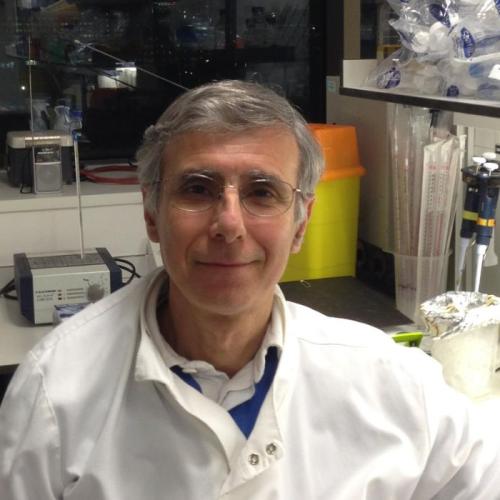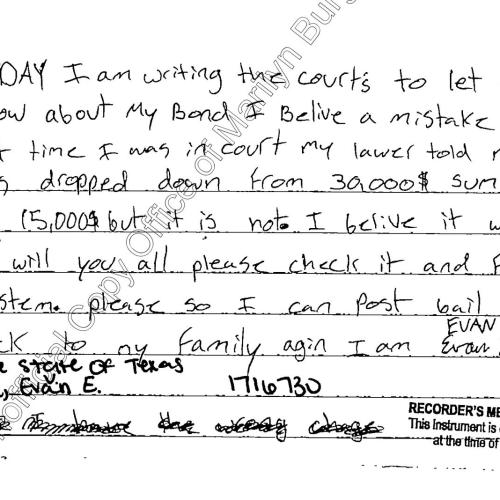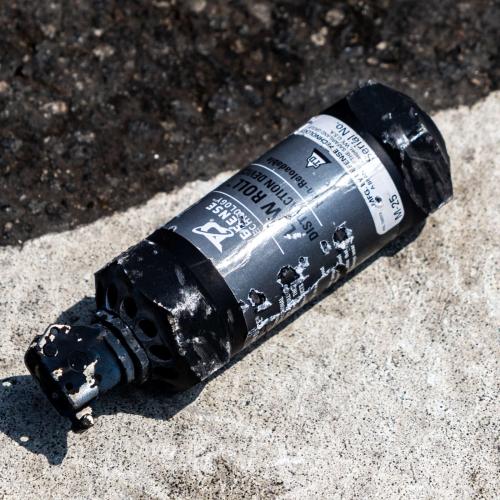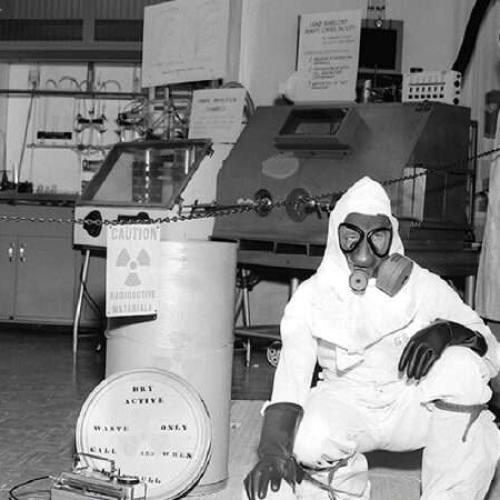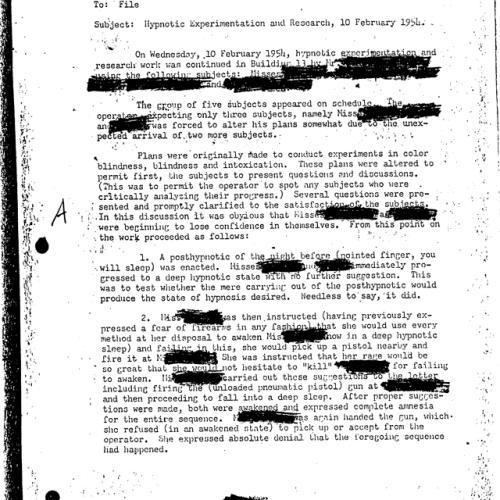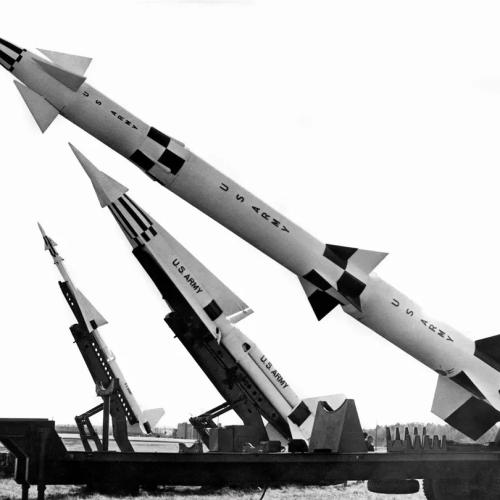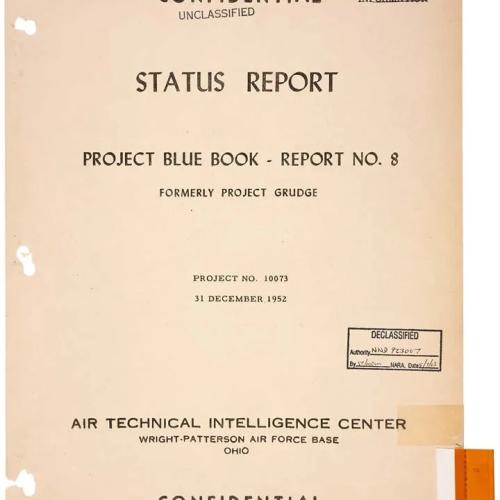Energy Inventions News Articles
Below are key excerpts of revealing news articles on energy inventions from reliable news media sources. If any link fails to function, a paywall blocks full access, or the article is no longer available, try these digital tools.
For further exploration, delve into our Energy Information Center.
Scientists have developed new technology that can turn seawater into clean drinking water in less than 30 minutes. Researchers based in Australia used a metal-organic framework (MOF), a type of lattice-like crystal, to desalinate water. The hollow framework of pores separates the salty solute within the brackish water or even saltier seawater, in a process known as molecular sieving. Under dark conditions, the framework absorbs salts and other impurities in the water in 30 minutes. The MOF itself is then regenerated for reuse in just four minutes, using sunlight to remove the adsorbed salts. The light-responsive MOF was used to filter harmful particles from water and generate 139.5 litres of clean water per kilogram of MOF per day. Scientists say their technology is more energy-efficient than current desalination practices, including reverse osmosis, and could provide potable water for millions globally. Water scarcity is one of the largest global risks in the upcoming years, according to the World Economic Forum (WEF). Thermal desalination processes by evaporation using solar energy are widely used to produce fresh water, but can be highly energy intensive. 'Sunlight is the most abundant and renewable source of energy on Earth,' said Professor Huanting Wang ... at Monash University in Australia. 'Our development of a new adsorbent-based desalination process through the use of sunlight for regeneration provides an energy-efficient and environmentally-sustainable solution for desalination.'
Note: Explore a treasure trove of concise summaries of incredibly inspiring news articles which will inspire you to make a difference.
Lockheed Martin has reportedly been working on a revolutionary new type of reactor that can power anything from cities to aircraft carriers. The Maryland-based defense contractor recently received a patent for the compact fusion reactor (CFR) after filing plans for the device in 2014. According to reports, one generator would be as small as a shipping container but produce the energy to power 80,000 homes or one of the U.S. Navys Nimitz-class carriers. Lockheeds advanced projects division, Skunk Works, has reportedly been working on the futuristic power source since 2014 and claimed at the time that a CFR could be ready for production by 2019. I started looking at all the ideas that had been published. I basically took those ideas and melded them into something new by taking the problems in one and trying to replace them with the benefits of others, Dr. Thomas McGuire of Skunk Works said during a 2014 interview. The nice thing about a fusion reaction is that if somehow it would go out of control, it would just stop itself automatically, William & Marys Saskia Mordijck told Phys.org in 2012. If a fission reaction goes out of control, it can really go out of control. You cant stop it and it actually might go into a nuclear meltdown. Lockheed advertises its quest to develop fusion power on its website, calling the technology a cleaner, safer source of energy that could be used to power communities or even travel to Mars.
Note: A 2004 New York Times article stated that Lockheed Martin runs a "breathtakingly big part" of the US. This company's "Skunk Works" was kept very secret until 2014, when reporters were given a glossy brochure featuring a "10-point "Skunk Works 2015" agenda". For more along these lines, see concise summaries of deeply revealing energy invention news articles from reliable major media sources.
Engineers have developed a turbine which has the potential to power a small town all the while being no bigger than your office desk. Designed by GE Global Research, the turbine could power 10,000 homes and according to researchers, could help to solve some of the world's growing energy challenges. But rather than steam, which is typically used to set turbines in motion, the new turbine uses carbon dioxide. 'This compact machine will allow us to do amazing things,' said Doug Hofer, lead engineer on the project. According to MIT Tech Review, the turbine is driven by 'supercritical carbon dioxide', which is kept under high pressure at temperatures of 700˚C. Under these conditions, the carbon dioxide enters a physical state between a gas and a liquid, enabling the turbine to harness its energy for super-efficient power generation - with the turbines transferring 50 per cent of the heat into electricity. It could help energy firms take waste gas and repurpose it for efficient and cleaner energy production. Waste heat produced from other power generation methods, such as solar or nuclear, could be used to melt salts, with the molten salts used to the carbon dioxide gas to a super-critical liquid - which may be much quicker than heating water for steam. Currently, the design of the turbine would enable up to 10,000 kilowatts of energy to be produced, but the turbines could be scaled up to generate 500 megawatts, enough to power a city.
Note: Explore a treasure trove of concise summaries of incredibly inspiring news articles which will inspire you to make a difference.
Do you think a 13-year-old could change the world? Max Loughan could be the one to do it. When we interviewed him, Max was wearing his lab coat ... in his parent's old boiler room, which has been converted into a lab. He ponders the future often. "The future that I imagine is the future, frankly we all imagine." He wants to make the world a better place, and to do that, Max believes you need one single thing: "If you got energy, you have power, you have everything." So to solve this problem, a few months ago, Max took the matter into his own hands. He created an electromagnetic harvester out of a coffee can, some wire, two coils, and a spoon. "This cost me 14 bucks," Max said. The harvester conducts radio waves, thermal, and static energy, and turns it into electricity. "This wire takes energy from the air." And the inside the coffee can, "We turn it from AC to DC." We took the device outside, and wrapped Max's twin brother, Jack, in a string of L.E.D. lights. Max connects the lights to the harvester, and sure enough, they turned on. His device clearly works. A $14.00 invention was able to do that. So imagine this same harvester on a scale 20 times larger. "As cheesy as this sounds, from day one, on this planet that I knew I was put here for a reason," said Max. "And that reason is to invent, to bring the future."
Note: Don't miss this video of the most amazing 13-year-old who just may have solved the energy problems of our world!!! For more along these lines, see concise summaries of deeply revealing new energy technology news articles from reliable major media sources.
Sports cars may not have the best reputation for being environmentally-friendly, but this sleek machine has been designed to reach 217.5 mph (350 km/h) using nothing but saltwater. Its radical drive system allows the 5,070lbs (2,300kg) Quant e-Sportlimousine to reach 0-60 mph (100 km/h) in 2.8 seconds, making it as fast as the McLaren P1. After making its debut at the 2014 Geneva Motor Show in March, the saltwater technology has now been certified for use on European roads. The 920 horsepower (680 kW) Quant e-Sportlimousine uses something known as an electrolyte flow cell power system to power four electric motors within the car. It works in a similar way to a hydrogen fuel cell, however, the liquid used for storing energy is saltwater. The liquid passes through a membrane in between the two tanks, creating an electric charge. This electricity is then stored and distributed by super capacitors. The car carries the water in two 200-litre tanks, which in one sitting will allow drivers to travel up to 373 miles (600km). NanoFlowcell AG, a Lichtenstein-based company behind the drive, is now planning to test the car on public roads in Germany and elsewhere in Europe as the company prepares for series production. It claims the technology offers five times the energy capacity of lithium-ion batteries of the same weight. 'We've got major plans, and not just within the automobile industry,' says NanoFlowcell AG Chairman of the Board Professor Jens-Peter Ellermann. 'The potential of the NanoFlowcell is much greater, especially in terms of domestic energy supplies as well as in maritime, rail and aviation technology.'
Note: See the link above for photos and videos of this sleek masterpiece. Why isn't this car and it's unique technology getting more press? For more on this amazing car, see its website and read a gizmag article with more on how the car has received approval to run on European roads. Explore a treasure trove of concise summaries of incredibly inspiring news articles which will inspire you to make a difference.
Tesla Motors Inc.s electric Model S, Motor Trends 2013 Car of the Year, received the highest rating from Consumer Reports in an evaluation of the luxury sedan that led first-quarter North American plug-in car sales. The Model S from Palo Alto, California-based Tesla scored 99 out of 100 points, the non-profit magazine said in an e-mailed statement. The $89,650 car bought by Consumer Reports performed better, or just as well overall as any vehicle its ever tested, the ... magazine said. It accelerates, handles and brakes like a sports car, it has the ride and quietness of a luxury car and is far more energy efficient than the best hybrid cars, said Jake Fisher, Consumer Reports director of automotive testing. No rechargeable car has won a score as high as the Model S. The magazine last gave a vehicle 99 points in 2007, when Toyota Motor Corp.s Lexus LS460L ranked that high. Model S shortcomings include limited range, long charge times and coupe-like styling that impairs rear visibility and impedes access, Consumer Reports said. Along with reliability that isnt yet determined, Tesla still has a limited service network, the magazine said. The test vehicle had an 85-kilowatt/hour lithium-ion battery pack and averaged about 200 miles (322 kilometers) per charge in real-world driving, the magazine said. The Tesla is easily the most practical electric car that has been tested to date, Consumer Reports said.
Note: After undeniable suppression of the electric car by car manufacturers, independent upstart Tesla Motors has done it! Expect to see more breakthroughs from this great new company. For more on the company's amazing namesake and how his inventions were suppressed, click here.
In the new crop of electric cars, the Rav4 may be the best you've never heard of. It comes from one of the world's largest automakers and sports a drivetrain built by Tesla Motors, rock star of the plug-in world. And yet, outside the circle of electric enthusiasts, few drivers know it exists. You can buy it only in California. Toyota doesn't advertise it on TV. So far, the company has committed to building just 2,600. Critics, including some people who love the Rav4 EV, say Toyota made it only to comply with California regulations that force automakers to sell zero-pollution cars. "Everyone agrees it's a wonderful car," said Felix Kramer, founder of CalCars, a plug-in vehicle advocacy group. "Too bad there's not enough." That suspicion comes from experience. Toyota made an electric version of the Rav4 once before, building 1,484 of the small SUVs between 1997 and 2003. Then the company killed the program, after California changed its zero-emission vehicle (ZEV) rules. The new Rav4 EV ... boasts ferocious acceleration, plenty of power and a low center of gravity thanks to the big battery pack hidden in the floor. It's not a luxury car, but the interior is comfortable and plush, tricked out with a touch-screen and heated seats. Those so inclined can take the Rav4 EV from a standstill to 60 mph in 7 seconds. The car gets a solid 125 miles on a fully charged battery pack, and an easy-to-read number on the dash constantly reminds you how many miles you have left.
Note: Once again a major car manufacturer produces a great electric vehicle only to suppress it. Remember "Who Killed the Electric Car", the movie on GM's EV1 which was killed despite major consumer interest? Then there was Toyota's 100 mpg Eco Spirit which was also killed. For lots more reliable information on this suggesting industry suppression of energy breakthroughs, click here.
[Video transcript] Narrator: While the world is drastically dependent on fossil fuel, researchers at NASA Langley Research Center are working on another way of producing energy-efficient nuclear power. Senior Resarch Scientist Dr Zawodny: This other form of nuclear power releases energy by adding neutrons. Eventually [the nuclei] gain a sufficient number of neutrons that they spontaneously decay into something of the same mass but a different element. It has the demonstrated ability to produce excess amounts of energy, cleanly, without hazardous ionizing radiation, without producing nasty waste. Narrator: This clean form of energy is ... able to support everything from transportation systems to infrastructure. Dr. Zawodny: The easiest implementation of this would be for the home. It would be ... dual use. It would [produce] heat; and youd derive electricity from it to run your electronics, power the house, power the building, power the light industry. And then the waste heat would be used for environmental control [i.e. heating, air conditioning, etc.] and warm water. Narrator: NASAs method for enhancement of surface plasmon polaritons to initiate and sustain LENR in Metal Hydride Systems, a clean nuclear energy for your power-operated technology.
Note: LENR stands for Low Energy Nuclear Reactions, aka cold fusion. So NASA is now acknowledging cold fusion is real! And their research provides major hope for the future. To see Dr. Zawodny's patent for this revolutionary technology, click here. For more on NASA's involvement in this, click here. For lots more reliable information on the suppression of cold fusion/LENR by the media and the scientific mainstream, click here. For more inspiring news on amazing new energy inventions, click here.
Water out of air? A Texas man has invented a machine that does just that. The drought doesn't worry [inventor Terry LeBleu] because he has invented and patented a new machine. It's called the "Drought Master" and makes drinkable water out of air. "It pulls the air through it, pulls out the moisture, and exhausts the air," LeBleu says. Depending on humidity, the machine can make between five to seven gallons of pure water in one day. All you have to do is plug it in, and one gallon costs only 4 cents in electrical charges. An independent lab took samples of LeBleu's water and found it had no bacteria and is free of metals. Lab techs say it's similar to distilled water. Willie Nelson owns 50 of these machines, including an indoor version. Even Texas Governor Rick Perry owns one. But LeBleu wants his invention to benefit local farmers and ranchers. The machine is quieter than a refrigerator, and you only have to wash the filter every few years. Building one takes only two hours. The oldest model made is still up and running. It's been functioning for a decade.
Note: For a more detailed article, click here.
Solar power may be cheaper than electricity generated by fossil fuels and nuclear reactors in three to five years because of innovations, said Mark M. Little, global research director for General Electric Co. If we can get solar at 15 cents a kilowatt-hour or lower, which Im hopeful that we will do, youre going to have a lot of people that are going to want to have solar at home, Little said. The 2009 average US retail rate per kilowatt-hour for electricity ranged from 6.1 cents in Wyoming to 18.1 cents in Connecticut, according to federal data. GE said in April that it had boosted the efficiency of thin-film solar panels to a record 12.8 percent. Improving efficiency, or the amount of sunlight converted to electricity, helps reduce costs. The panels will be made at a plant GE intends to open in 2013. Most solar panels use silicon-based photovoltaic cells. The thin-film versions, made of glass or other material coated with cadmium telluride or copper indium gallium selenide alloys, account for about 15 percent of the $28 billion in worldwide solar-panel sales. First Solar Inc. is the worlds largest producer of thin-film panels, with $2.6 billion in yearly revenue.
Note: For reliable reports on promising new energy technologies, click here.
A few weeks before the tsunami struck Fukushimas uranium reactors and shattered public faith in nuclear power, China revealed that it was launching a rival technology to build a safer, cleaner, and ultimately cheaper network of reactors based on thorium. Chinas Academy of Sciences said it had chosen a thorium-based molten salt reactor system. The liquid fuel idea was pioneered by US physicists at Oak Ridge National Lab in the 1960s. Chinese scientists claim that hazardous waste will be a thousand times less than with uranium. The system is inherently less prone to disaster. The reactor has an amazing safety feature, said Kirk Sorensen, a former NASA engineer at Teledyne Brown and a thorium expert. If it begins to overheat, a little plug melts and the salts drain into a pan. There is no need for computers, or the sort of electrical pumps that were crippled by the tsunami. The reactor saves itself, he said. US physicists in the late 1940s explored thorium fuel for power. It has a higher neutron yield than uranium, a better fission rating, longer fuel cycles, and does not require the extra cost of isotope separation. The plans were shelved because thorium does not produce plutonium for bombs. As a happy bonus, it can burn up plutonium and toxic waste from old reactors, reducing radio-toxicity and acting as an eco-cleaner.
Note: For a 30-minute documentary on the powerful potential of thorium as an energy source, click here. For many reports from reliable sources on promising new energy technologies, click here.
This week, scientists gathered at the American Chemical Society's spring meeting in San Francisco to turn the spotlight on a highly unorthodox path: the effect known as cold fusion. This year's session featured nearly 50 presentations - including reports on batteries and bacteria that appear to exhibit the cold-fusion effect. Back in 1989, cold fusion was heralded as a simple, inexpensive way to get a power-generating fusion reaction on a desktop. But when the experimental results couldn't be reproduced, the researchers were driven into obscurity [and] the term "cold fusion" became synonymous with quackery. Chemists, however, have kept up their interest in the effect. Rick Nebel [has headed] up a handful of researchers following the less-traveled path to fusion at EMC2 Fusion Development Corp. EMC2 recently created a buzz in the fusion underground by reporting on its Web site that it successfully completed a series of experiments to "validate and extend" earlier results. The company is now using a $7.9 million contract from the U.S. Navy to build a bigger test machine. Nebel and his colleagues are now seeking contributions to fund the development of what they say would be a 100-megawatt fusion plant - a "Phase 3" effort projected to cost $200 million and take four years. "Successful Phase 3 marks the end of fossil fuels," the Web site proclaims.
Note: For a powerful, reliable documentary showing how promising results from cold fusion were strongly suppressed, click here. For lots of reports from reliable sources of new energy developments, click here.
In the world of energy, the Holy Grail is a power source that's inexpensive and clean, with no emissions. Over 100 start-ups in Silicon Valley are working on it. One of them, Bloom Energy, is about to make public its invention: a little power-plant-in-a-box they want to put literally in your backyard. You'll generate your own electricity with the box and it'll be wireless. The idea is to one day replace the big power plants and transmission line grid. K.R. Sridhar ... says he knows it works because he originally invented a similar device for NASA. He really is a rocket scientist. He invented a new kind of fuel cell, which is like a very skinny battery that always runs. Sridhar feeds oxygen to it on one side, and fuel on the other. The two combine within the cell to create a chemical reaction that produces electricity. There's no need for burning or combustion, and no need for power lines from an outside source. "It's cheaper than the grid, it's cleaner than the grid." Twenty large, well-known companies have quietly bought and are testing Bloom boxes in California. The first customer was Google. Four units have been powering a Google datacenter for 18 months. They use natural gas, but half as much as would be required for a traditional power plant. John Donahoe, eBay's CEO, says its five boxes were installed nine months ago and have already saved the company more than $100,000 in electricity costs. eBay's boxes run on bio-gas made from landfill waste, so they're carbon neutral. "In five to ten years, we would like to be in every home." [Sridhar] said a unit should cost an average person less than $3,000.
Note: To watch the fascinating 60 Minutes video clip of this amazing invention, click here. For other CBS videos clips on the Bloom Box, click here. For astounding news on other new energy sources and inventions, click here and here.
MIT professor Daniel G. Nocera has long been jealous of plants. He desperately wanted to do what they do--split water into hydrogen and oxygen and use the products to do work. That, he figures, is the only way we humans can solve our energy problems; enough energy pours down from the sun in one hour to power the planet's energy needs for a year. Nocera's discovery [is] a cheap and easy way to store energy that he thinks will be used to change solar power into a mainstream energy source. Plants catch light and turn it into an electric current, then use that energy to excite catalysts that split water into hydrogen and oxygen during what is called photosynthesis' light cycle. The energy is then used during the dark cycle to allow the plant to build sugars used for growth and energy storage. Nocera and Matthew Kanan, a postdoctoral fellow in Nocera's lab, focused on the water-splitting part of photosynthesis. They found cheap and simple catalysts that did a remarkably good job. They dissolved cobalt and phosphate in water and then zapped it with electricity through an electrode. The cobalt and phosphate form a thin-film catalyst around the electrode that then use electrons from the electrode to split the oxygen from water. The oxygen bubbles to the surface, leaving a proton behind. A few inches away, another catalyst, platinum, helps that bare proton become hydrogen. The hydrogen and oxygen, separated and on-hand, can be used to power a fuel cell whenever energy is needed.
Note: This amazing breakthrough resulted in a $4 million government grant for further development. For more, click here and here.
On a recent run from Boston to Cape Cod, I test drove the 2008 Honda Accord, the latest version of this family favorite. The new Accord boasts an environmental first: a six-cylinder gasoline engine that's cleaner than many hybrid systems. There's only one catch: You can't actually buy this ultra-green Accord, or the four-cylinder version that also produces near-zero pollution. That is, unless you live in California, New York or six other northeast states that follow California's tougher pollution rules. Only there can you buy this Accord, or the roughly two dozen other models that meet so-called Partial Zero Emissions Vehicle standards, PZEV for short. Not only can't you buy one, but the government says it's currently illegal for automakers to sell these green cars outside of the special states. Under terms of the Clean Air Act in the kind of delicious irony only our government can pull off anyone (dealer, consumer, automaker) involved in an out-of-bounds PZEV sale could be subject to civil fines of up to $27,500. Volvo sent its dealers a memo alerting them to this fact, noting that its greenest S40 and V50 models were only for the special states. So, just how green is a PZEV machine? Well, if you just cut your lawn with a gas mower, congratulations, you just put out more pollution in one hour than these cars do in 2,000 miles of driving. Grill a single juicy burger, and you've cooked up the same hydrocarbon emissions as a three-hour drive in a Ford Focus PZEV. As the California Air Resources Board has noted, the tailpipe emissions of these cars can be cleaner than the outside air in smoggy cities. PZEV models are already available from Toyota, Ford, Honda, GM, Subaru, Volvo and VW. But chances are, you've never heard of them.
Note: For many exciting articles about new, efficient and clean energy inventions, click here.
Toyota Prius owners tend to be a proud lot since they drive the fuel-efficient hybrid gas-electric car that's ... one of the hottest-selling vehicles in America. A few, however, felt that good was not good enough. They've made "improvements" even though the modifications voided parts of their warranties. Why? Five words: one hundred miles per gallon. "We took the hybrid car to its logical conclusion," [Felix] Kramer says, by adding more batteries and the ability to recharge by plugging into a regular electrical socket at night. Compared with the Prius' fuel efficiency of 50 mpg, plug-in hybrids use half as much gasoline by running more on cleaner, cheaper, domestic electricity. These trendsetters monkeyed with the car ... to make a point: If they could make a plug-in hybrid, the major car companies could, too. Kramer ... and a cadre of volunteers formed the California Cars Initiative (online at calcars.org). They added inexpensive lead-acid batteries ... giving the car over 100 mpg in local driving and 50 to 80 mpg on the highway. The cost of conversion is about $5,000 for a do-it-yourselfer. Several small companies like EnergyCS ... started doing small numbers of conversions for fleets and government agencies using longer-lasting, more energy-dense lithium-ion batteries. Kramer hired EnergyCS to convert his Prius and reported on a typical day of driving. Compared with driving his Prius before the conversion, he ... spewed out two-thirds less greenhouse gases at a total cost of $1.76 for electricity and gasoline, instead of the $3.17 it would have required on gasoline alone. People want plug-in hybrids but can't get them. Dealers don't sell them yet, and the few conversion services cater to fleets.
Note: For a video and educational package to guide those who want to build a 100 mpg car, see www.eaa-phev.org. For why the car companies with their massive budgets haven't developed cars like this, click here.
Within five years, solar power will be cheap enough to compete with carbon-generated electricity. In a decade, the cost may have fallen so dramatically that solar cells could undercut oil, gas, coal and nuclear power by up to half. Anil Sethi, the chief executive of the Swiss start-up company Flisom, says he looks forward to the day - not so far off - when entire cities in America and Europe generate their heating, lighting and air-conditioning needs from solar films on buildings with enough left over to feed a surplus back into the grid. The secret? A piece of dark polymer foil, as thin a sheet of paper. It is so light it can be stuck to the sides of buildings. It can be mass-produced in cheap rolls like packaging - in any colour. The "tipping point" will arrive when the capital cost of solar power falls below $1 (51p) per watt, roughly the cost of carbon power. The best options today vary from $3 to $4 per watt - down from $100 in the late 1970s. Mr Sethi believes his product will cut the cost to 80 cents per watt within five years, and 50 cents in a decade. "We don't need subsidies, we just need governments to get out of the way and do no harm," he said. Solar use [has] increased dramatically in Japan and above all Germany, where Berlin's green energy law passed in 2004 forces the grid to buy surplus electricity from households at a fat premium. The tipping point in Germany and Japan came once households [understood] that they could undercut their unloved utilities. Credit Lyonnais believes the rest of the world will soon join the stampede. Needless to say, electricity utilities are watching the solar revolution with horror.
Note: Why is this inspiring, important news getting so little press coverage? And why not more solar subsidies? For a possible answer, click here. And for an amazing new energy source not yet reported in the major media which could make even solar energy obsolete, click here.
A very reputable, very careful group of scientists at the University of Los Angeles ... has initiated a fusion reaction using a laboratory device that's not much bigger than a breadbox, and works at roughly room temperature. This time, it looks like the real thing. The whole trick with fusion is you've got to get protons close enough together for the strong force to overcome their electrical repulsion and merge them together into a nucleus. Instead of using high temperatures and incredible densities to ram protons together, the scientists at UCLA cleverly used the structure of an unusual crystal. Crystals are fascinating things; the atoms inside are all lined up in a tightly ordered lattice, which creates the beautiful structure we associate with crystals. Stressing the bonds between the atoms of some crystals causes electrons to build up on one side, creating a charge difference over the body of the crystal. Instead of using intense heat or pressure to get nuclei close enough together to fuse, this new experiment used a very powerful electric field to slam atoms together. This experiment has been repeated successfully and other scientists have reviewed the results. For the time being, don't expect fusion to become a readily available energy option. The current cold fusion apparatus still takes much more energy to start up than you get back out. But it really may not be long until we have the first nuclear fusion-powered devices in common use.
Note: If the above link fails, click here. Why wasn't this widely reported? For a possible answer, click here.
The U.S. Air Force is quietly spending millions of dollars investigating ways to use a radical power source -- antimatter, the eerie "mirror" of ordinary matter -- in future weapons. The most powerful potential energy source presently thought to be available to humanity, antimatter is a term normally heard in science-fiction films. But antimatter itself isn't fiction. During the Cold War, the Air Force funded numerous scientific studies of the basic physics of antimatter. Following an initial inquiry from The Chronicle this summer, the Air Force forbade its employees from publicly discussing the antimatter research program. Still, details on the program appear in numerous Air Force documents distributed over the Internet prior to the ban. It almost defies belief, the amount of explosive force available in a speck of antimatter. One millionth of a gram of positrons contain as much energy as 37.8 kilograms (83 pounds) of TNT. A simple calculation, then, shows that about 50-millionths of a gram could generate a blast equal to the explosion ... in Oklahoma City in 1995. Officials at Eglin Air Force Base initially agreed enthusiastically to try to arrange an interview with ... Kenneth Edwards, director of the "revolutionary munitions" team at the Munitions Directorate at Eglin. "We're all very excited about this technology," spokesman Rex Swenson [said] in late July. But Swenson backed out in August after he was overruled by higher officials in the Air Force and Pentagon. Reached by phone in late September, Edwards repeatedly declined to be interviewed. His superiors gave him "strict instructions not to give any interviews personally. "I'm sorry about that -- this (antimatter) project is sort of my grandchild."
Somewhere in the vast ocean, a little boat covered in solar panels is doing something extraordinary: making its own hydrogen fuel from the seawater underneath it. The Energy Observer uses a patchwork of different cutting-edge technologies to generate enough energy to power nine homes each day. During the day, 200 square meters of solar panels charge up the boat's lithium ion batteries. Any extra energy is stored as hydrogen, thanks to a special fuel cell that goes by the name Rex H2 (short for Range Extender H2). The Rex H2 was made by Toyota, using components from Toyota's hydrogen-powered Mirai vehicle line. The fuel cell brings in seawater, removes the salt and then separates the H from the pure H20 with electricity. When the Energy Observer began its journey in 2017, it could only produce hydrogen while stopped. That changed in a big way with the addition of the Oceanwings, 12-meter sails that improved the efficiency of the Energy Observer from 18% to 42%, to the point where it can now produce hydrogen even while sailing. One of the main benefits of hydrogen is its ability to store more more electricity by weight than its lithium ion competition. This benefit is especially useful at sea. Because fossil fuels have had more than a century's head start, we now find ourselves far beyond the point of any one technology being a silver bullet for our growing energy needs. A sustainable future will require a patchwork of new technologies, like the one powering the Energy Observer.
Note: Explore a treasure trove of concise summaries of incredibly inspiring news articles which will inspire you to make a difference.
Important Note: Explore our full index to revealing excerpts of key major media news articles on several dozen engaging topics. And don't miss amazing excerpts from 20 of the most revealing news articles ever published.













